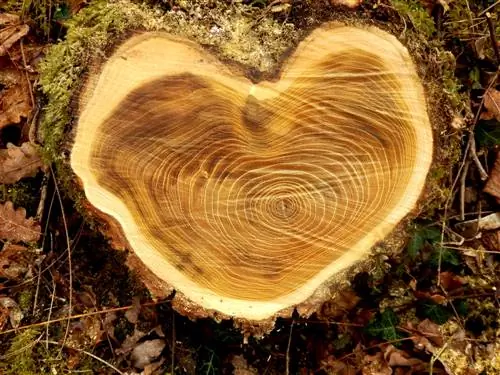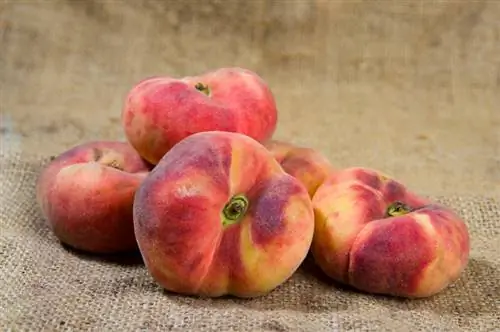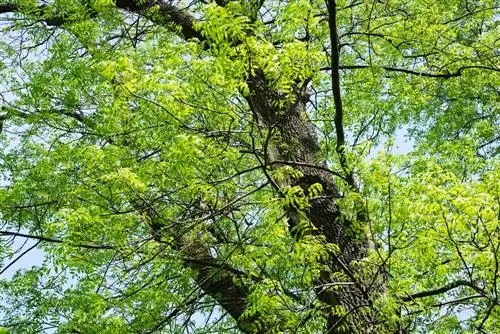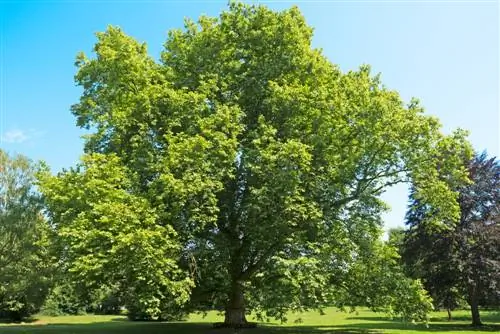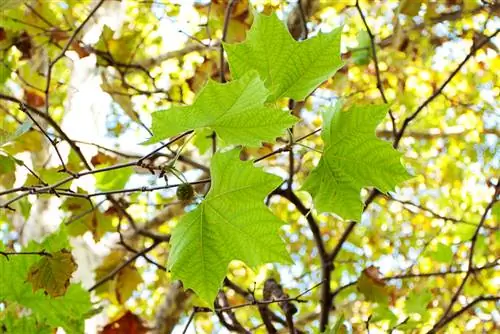- Author admin [email protected].
- Public 2023-12-16 16:46.
- Last modified 2025-01-23 11:22.
A tree is distinguished from other plants by its trunk. A complex inner life is hidden beneath the inconspicuous bark. Welcome to a fascinating journey through the structure of a tree trunk from the bark to the heartwood.
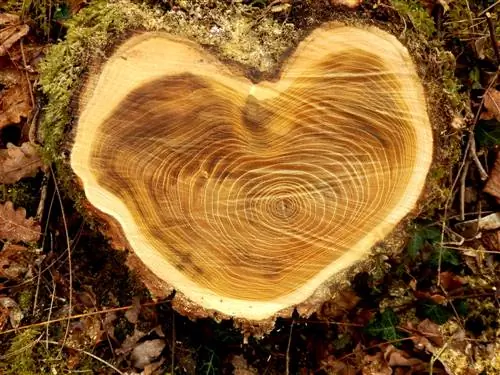
How is a tree trunk structured?
A tree trunk consists of five layers: bark, bast, cambium, sapwood and heartwood. The bark protects the tree, the bast transports nutrients, the cambium promotes growth, the sapwood conducts water, and the heartwood provides stability.
How is a tree trunk structured?
The structure of a tree trunk consists of thefive layers bark, bast, cambium, sapwood and heartwood. Each layer makes an important contribution to the growth of a tree.
Read on because there is interesting information to discover about how each individual tree trunk layer works.
What is the bark in the tree trunk structure?
The bark protects the tree trunk fromenvironmental influences, such as intense sunlight, frost, heat or insect infestation. A bark forms the outermost layer of bark and is made from cork, the dead bast tissue.
Bark as an identifying feature
You can easily recognize a tree by the texture of its bark. There are three types of bark:
- Striped bark with distinctive longitudinal stripes, typical of a tree of life (Thuja).
- Scaly bark, characteristic of most trees, such as maple (Acer) or pine (Pinus).
- Netted bark, similar to a striped bark with a net-like torn bark in places, like a sessile oak (Quercus petrea).
What is the raffia in the tree trunk structure?
Bast is aliving tissue layer between bark and cambium. Sugar compounds obtained through photosynthesis in the tree crown accumulate in the bast tissue. From there, the vital nutrients are passed on to leaf buds, branch tips, roots or other hotspots of tree growth.
Raffia fabric is soft, moist and relatively short-lived. Dead bast turns into cork and bark.
What is the cambium in the tree trunk structure?
The cambium is a thin layer of cells and is responsible for thethickness growth of a tree trunk. That's why cambium is also called the growth layer of the tree:
- Cambium forms bast (phloem) on the outside and wood (xylem) on the inside.
- In the spring, cambium produces light early wood, followed by dark, denser wood the rest of the year.
- Cells in earlywood are more voluminous so that the tree can quickly transport water and nutrients to the crown.
- Dark latewood is used for stability.
- In the case of trunk injuries caused by environmental influences or wounds after cutting a tree, Cambium takes care of wound healing.
What is the sapwood in the tree trunk structure?
Sapwood is young, very functionalactive tissue that transports water and nutrients to the crown. Over the years, sapwood loses its vitality, hardens, dies and becomes heartwood.
What is the heartwood in the tree trunk structure?
In tree trunk construction, heartwood is the load-bearing element and is also referred to assupport framework. This area is closed because there is no water transport. Heartwood consists primarily of needle-shaped cellulose fibers. In the cross section of the trunk, heartwood can be seen as a dark, inner zone.
Tip
Natural treasure tree trunk bark
Bark fulfills a variety of functions in the natural hobby garden. When processed into bark mulch, pieces of bark give the bed a well-groomed appearance, suppress annoying weeds and are useful as a natural path surface. If bark is composted, nutrient-rich bark compost is created for ornamental and kitchen gardens. As a substitute for peat, bark humus is invaluable for preserving threatened moorland landscapes.

